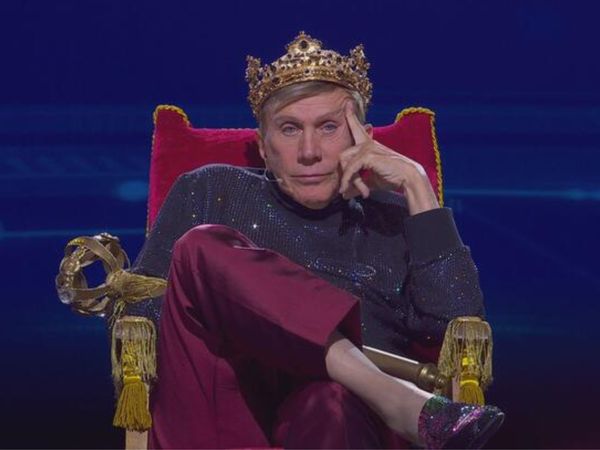
The CEO candidate seemed like a perfect fit. Blackstone, the private equity titan, had acquired a real estate company and was searching for the ideal leader to helm it. The candidate had excelled as a senior executive at another Blackstone-owned real estate company and had greatly impressed interviewers on the CEO search committee.
But soon after he was hired to the new position, problems began to surface. The role required a chief executive who had a strong grasp of the local market, relationships with regional policymakers, and expertise in managing regulatory affairs—areas where his experience was limited. Within six months, it was clear that the CEO was struggling. The company had fallen significantly behind on its growth plan and failed to meet key financial milestones. Blackstone initially attempted to hire its way out of the problem, adding a chief transformation officer, an executive to restructure costs, and a more active advisory board chair. The CEO was also given feedback and coaching. But despite those efforts, his tenure lasted only two years.
“If we had simply stepped back and asked ourselves, ‘What do we uniquely need this CEO to do to get us where we need to be?’ we would have realized he wasn’t the right fit,” admits Courtney della Cava, Blackstone’s senior managing director and global head of portfolio talent and organizational performance. “Instead, we became enamored with his past success—and it set us back.”
It was a costly error, but one that Della Cava says highlights the importance of Blackstone’s current approach to hiring CEOs for the 250 companies in its portfolio.
Blackstone has reached the top of the private equity pyramid by mastering the art of acquiring promising companies, improving their operations and profitability over a few years, then selling them at a higher value. It’s a strategy that has grown its portfolio of companies and real estate assets to a value of $1.1 trillion—a nearly 13- fold increase compared to the $88 billion in assets under management when it went public in 2007.
The success of this model hinges on having the right leaders in place. And Della Cava was hired in 2021 to transform the firm’s CEO recruitment from an art to a more precise science.
Landing a C-Suite role at a Blackstone portfolio company is exceptionally competitive, and most candidates won’t make the cut, says Dan Kaplan, a senior client partner at Korn Ferry’s CHRO practice. “Everyone wants to be there,” Kaplan says. “It has become a brand synonymous with being best in class."
Under Della Cava, each aspiring company leader now undergoes a rigorous and time-consuming three- to four-month recruitment process that includes nearly a dozen interviews with Blackstone stakeholders, advisors, and consulting partners, as well as board presentations, third-party assessments, exhaustive feedback from references, and a nearly five-hour psychometric evaluation that’s designed to deeply probe the candidate’s cognitive ability, character, motivations, and essence as a leader.
Selecting a CEO is about betting on potential, and Della Cava has found that each component of Blackstone’s search process improves the likelihood of making the right appointment. This playbook, she says, is especially critical for a role that is grueling, fast-paced, and requires a person who can handle the volatility of being celebrated as a hero one day and criticized as a villain the next.
“Being a CEO is a high-intensity sport,” says Della Cava. “For the right person, it’s extraordinary. But it’s not for everyone.”
Blackstone's CEO recruitment framework, which Della Cava and her team have refined over the past four years, has quickly become the envy of other private equity firms, according to several executive recruiters. Her 11-person team often works on dozens of companies’ leadership searches at once.
With billions of dollars at stake, the importance of selecting the right CEO for a Blackstone portfolio company is extraordinarily high—for not only a company’s financial success but also its culture. “An underperforming leader results in an underperforming company,” says Della Cava. Put simply, she says: “Leadership is the No. 1 driver of value creation."
And getting a hire wrong can be a cascading disaster. Studies conducted by management consulting firm ghSMART found that a typical hiring mistake costs a company 15 times the employee’s base salary in hard costs and lost productivity. For example, a single error in hiring a $100,000 employee could result in losses exceeding $1.5 million. The stakes are even greater for executive roles.
Born and raised in San Diego and now living in San Francisco, Della Cava defies the stereotype of the laid-back, sun-chasing Californian. Impeccably dressed, well-groomed, and tall, she exudes a polished self-assuredness and sophistication reminiscent of a corporate Manhattan power player. She’s warm and highly personable, but also mentally shrewd, with a thoughtful and deliberate way of choosing her words.
Della Cava says she has always been introspective, and was curious from a young age about what drives people’s actions and decisions—partly the result, she says, of being the youngest of four kids. “I was the kid who put herself to sleep,” she recalls. “When you’re the baby in a large family, you become self-sufficient, and I became very observant, which turned out to be a gift."
Her father, an attorney, and her mother, a homemaker, often hosted dinner parties. “I would sit under the dining room table as a kid and just listen,” she says. “My parents didn’t know I was there, but it was a wonderful learning experience. I was enthralled by their conversations, trying to connect the dots and understand what they were discussing.”
This fascination with people and their motivations initially led Della Cava to a career in marketing. “I wanted to understand why people make the choices they do. Why Pepsi over Coke? Why Mazda over other car companies?” she says, seated in a 43rd-floor boardroom at Blackstone’s headquarters overlooking Manhattan’s Park Avenue.
Her career eventually shifted to management consulting, including stints at Bain & Company and Russell Reynolds. At Bain, much of her work centered on “the what”—as in, the strategy, she explains: “How do you figure out a business model quickly? What are the market dynamics, and what adds value?”
In 2010, Della Cava joined Russell Reynolds as the firm transitioned from being generalist to becoming expert in select industries. It was there that she had a pivotal realization: While much of the management consulting industry focuses on “the what,” success largely hinges on finding the right “who” to execute it: the staff, and especially company leaders.
This epiphany came from her relationship with a longtime client, a retail CEO, who followed Della Cava from her previous role in management consulting to her new position in executive search. Their dynamic evolved from “sterile” strategy discussions to deeply personal coaching about his ambitions, legacy, succession planning, and building a strong executive talent pipeline.
“I had this aha moment,” she explains. “If we could help companies get the right people in, they could figure out the ‘what’ because good leaders know the right questions to ask. But equally, you can’t get the right people in until you’re clear on strategy."
From her front-row seat working with Fortune 500 clients, Della Cava found that the most successful companies focus intensely on the “what” and the “who.” Both are encompassed in what Blackstone calls an “investment thesis” for each company.
$1.1 trillion
Value of the 250 companies and thousands of real estate assets in Blackstone's portfolio
A Blackstone investment thesis identifies three to five key levers for creating maximum value, which may include M&A, digital investments, or expansion into adjacent markets, and always incorporates a leadership component. It also sets the time horizon for achieving these objectives and, if applicable, outlines the exit plan.
The CEO selection process is extensive—and can be exhausting for candidates going through its many phases. It begins during the due-diligence process for a potential new investment. “Step one is figuring out how to drive the most value for the company,” says Della Cava. “Step two is finding leaders who can stay the course and deliver on it.”
Della Cava’s group assesses the company’s organizational structure, culture, and incumbent C-Suite. They collaborate with external advisors, business heads across private equity and real estate, and Blackstone’s network of approximately 100 senior advisors to translate the emerging investment thesis into leadership requirements.
About 85% of the time, there is some C-Suite reshuffling, which Della Cava acknowledges can be anxiety-inducing for incumbent executives. But she stresses that the process is not a one-sided slashing and burning of the existing leadership team. “It’s a transparent dialogue where we’re assessing whether the current team has the capabilities and skills required,” she explains. “And they’re also determining if they want to stay.”
For each mission-critical C-Suite and board role, Della Cava’s team creates a leadership scorecard that aligns their responsibilities with value-driving levers. After a deal is finalized, the CEO search begins in earnest. Blackstone works with executive recruitment firms such as Spencer Stuart to identify potential candidates to replace the current leadership.
During the early stages of a CEO search, around 10 to 15 candidates are considered, with only two advancing to the final stages. The process typically takes 90 to 120 days, with CEOs selected after an executive chair has been appointed.
"Being a CEO is a high-intensity sport. For the right person, it's extraordinary. But it's not for everyone."
Courtney Della Cava, Blackstone
In some cases, no changes are made to the C-Suite. Other times, a new role is added, or an existing executive is promoted. By the end of the first year of the investment, however, the go-forward team is firmly in place.
In November 2022, Ross Shuster, then CEO of Scotland-based industrial company Howden, got such a call from Spencer Stuart. Would he be interested in a CEO opportunity at a Blackstone portfolio company?
The previous month, Blackstone had announced its $14 billion acquisition of a majority stake in the engineering firm Emerson’s climate technologies business, forming a new company later named Copeland. It was a complex transaction: Though Blackstone had acquired the business, Emerson retained a 40% equity stake. Copeland, an HVAC compressor company, needed a CEO capable of carving out and transforming a noncore division of a larger conglomerate into a stand-alone entity—all while driving significant growth.
What followed for Shuster was an intensive four-month process that included multiple interviews with nearly a dozen people. He flew from the U.K. to New York City twice to meet the Blackstone team and spent countless hours preparing for each interview and the final board presentation—while still managing his CEO responsibilities at the time. “It was definitely time-consuming,” says Shuster, who officially assumed Copeland’s corner office in April 2023. “But it was intentional. It was focused.”
The most probing interview that Shuster went through before he was hired was with Rosanna Trasatti, a clinical psychologist and leadership consultant who has helped administer many of Blackstone’s psychometric analyses.
Trasatti’s job is to get past the spiel that most candidates come prepared to deliver. Those who have reached the highest levels of corporate America tend to present a polished persona. “They’ve reflected deeply, are self-aware, and have crafted a well-rehearsed narrative they’ve shared countless times,” says Trasatti.

The nearly five-hour psychometric assessment, with its probing and incisive questions, is designed to push candidates to move beyond their practiced narratives and offer deeper insights into how they think, learn, lead, and communicate. “By hour three—and certainly by hour four— most candidates let their guard down,” says Trasatti. “It’s challenging to maintain a polished story for that long.”
Some of the questions prompt candidates to provide specific examples of their tasks and results, while others are designed to encourage deeper reflection on the candidate’s life journey. “We take people back to their childhood and ask them to explore where they believe their drive originates,” she explains.
For instance, prospective CEOs might be asked to select six colleagues from the past five years and explain how those coworkers would describe them. This encourages candidates to imagine themselves through the eyes of peers, reports, and bosses. “We’re cognitively playing with getting them to access and share their stories in different ways,” says Trasatti. “I don’t allow them to sit in a space of practiced responses or emotional detachment from their narrative.”
The psychometric results are shared with participants during the session, where they’re able
to discuss and pressure-test them. Sometimes candidates get defensive because they don’t agree with the results. Sometimes the insights challenge their understanding of their own leadership style. If a candidate’s analysis suggests they thrive in entrepreneurial environments with minimal structure, for example, Trasatti might ask how they would handle implementing extensive structured processes. Doing so allows candidates to engage with the data, reflect on whether it resonates, and navigate unexpected or even difficult conversations that deviate from their prepared narrative.
For Shuster, the assessment highlighted his leadership style as that of a team builder. While capable of taking charge when necessary, he prefers to act as a facilitator, empowering others and fostering a shared ownership of decision-making. “My ideal executive team is, if someone walked into a room and saw the 12 of us talking, it would be hard to identify who the CEO, CFO, or CHRO is because everyone is passionate about every aspect of the business,” says Shuster.
The psychometric analysis also assesses the traits that are predictive of high performance, grouping them into “success modes” and “failure modes.” Success mode traits include resilience, grit, humility, and a track record of cultivating loyalty and followership, while failure modes often involve insecurity and low cognitive ability.
“Cognitive ability” might seem too obvious a requirement to note. But there’s more to the quality than simple intelligence. Candidates complete a timed test to measure their mental processing speed and gauge whether they can operate at the fast pace required for the corner office. “It’s not ‘Are you smart or stupid?’” says Della Cava. “It’s ‘Can you keep up? Do you have the cognitive speed, the ambition, the intellectual rigor, and mental agility to meet the demands of the role?’”
While candidates who score well below a certain threshold are more likely to fail as CEOs, a higher-than-average cognitive score does not necessarily predict success. “You kind of have to be tall enough to ride the ride, but being taller doesn’t make you enjoy the Ferris wheel more,” Trasatti explains.
References offer yet another assessment opportunity. Della Cava’s team goes beyond the references provided by CEO candidates, back-channeling and reaching out to its own network for deeper insights into the candidate’s work history. The group could include board directors, CEOs, customers, clients, former sponsors, or direct reports.
By the time candidates reach the board presentation stage, Blackstone has narrowed the CEO pool to two or three finalists. These hour-long presentations provide candidates with an opportunity to share their thoughts on the investment thesis and outline their plans for execution. “It’s a bit of a dress rehearsal for how they’ll engage with us,” says Della Cava.
It's an incredibly comprehensive approach, but as with anything involving human judgment, it’s not 100% error-free. Missteps have occurred when the firm overlooked obvious warning signs or overestimated its ability to mitigate them, says Della Cava.
Even with all the information and data gleaned from the extensive selection process, she concedes that it’s easy to become enamored with a candidate. “You start to build a character in your head instead of asking, ‘What do I uniquely need them to do? What specific qualities should I prioritize? What are the pragmatic tradeoffs, and how can we address their shortcomings with the right support and scaffolding?'"
The recipe for success as a Blackstone portfolio CEO
Blackstone’s rigorous process for selecting C-Suite executives to run its portfolio companies includes a nearly five-hour psychometric evaluation to assess whether candidates possess the qualities required to excel in these high-pressure roles. Based on hundreds of assessments of C Suite candidates, the firm has identified key traits that indicate a candidate’s potential for success—or risk of failure. Here are a few of them.
Success modes
- Resilience: Leaders are able to thrive under pressure, steadily managing a rapid pace, complex changes, ambitious goals, and constant scrutiny without buckling.
- Confident leadership: Leaders can rally their staff during periods of change because they have a compelling presence and can quickly capture attention, establish credibility, and earn trust.
- High emotional intelligence: Leaders have emotional awareness and empathy and can self-regulate their feelings. They build strong relationships, navigate complex interpersonal dynamics with ease, and are exceptional communicators.
- Self-awareness: Leaders demonstrate humility, take accountability for their mistakes, understand the impact of their behavior on the company, and understand their strengths and weakness.
Failure modes
- Below-average cognitive heft: Candidates whose problem-solving ability and mental processing speed are below average relative to their executive peers are unlikely to succeed.
- Inflexibility: An unwillingness to adapt, change, or compromise in response to new circumstances or ideas works against candidates.
- Insecurity: Candidates who often seek reassurance and answers from others, or who try to keep up an appearance of success by withholding information, avoiding issues, or presenting an overly optimistic outlook increase their risk of failure.
This article appears in the February/March 2025 issue of Fortune with the headline "The Blackstone edge."







